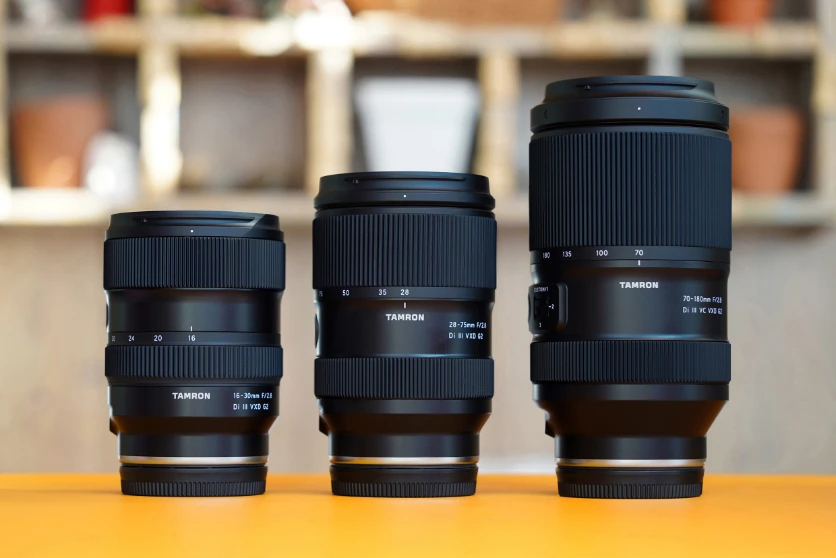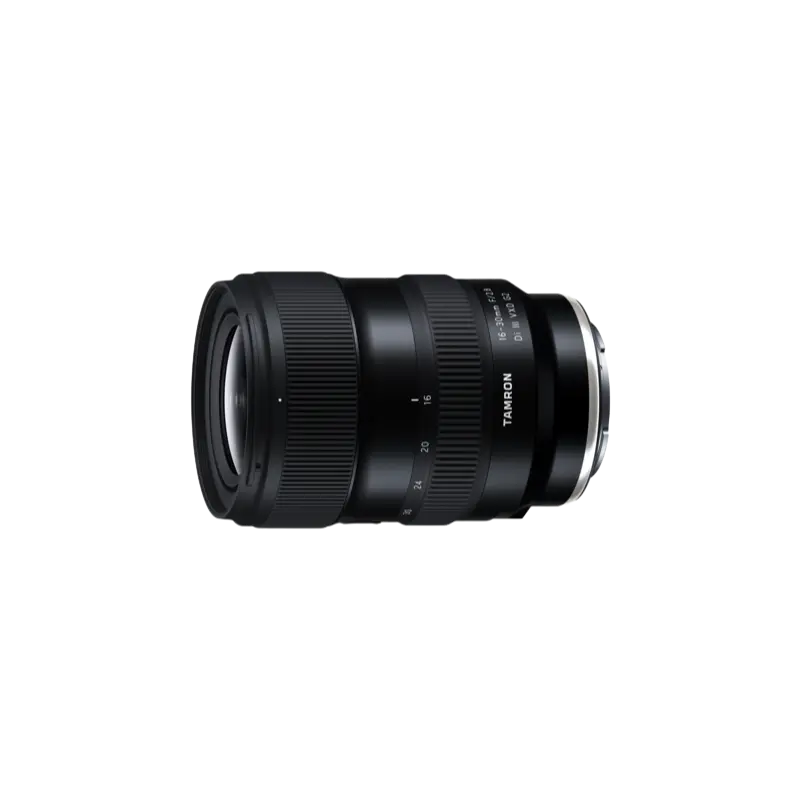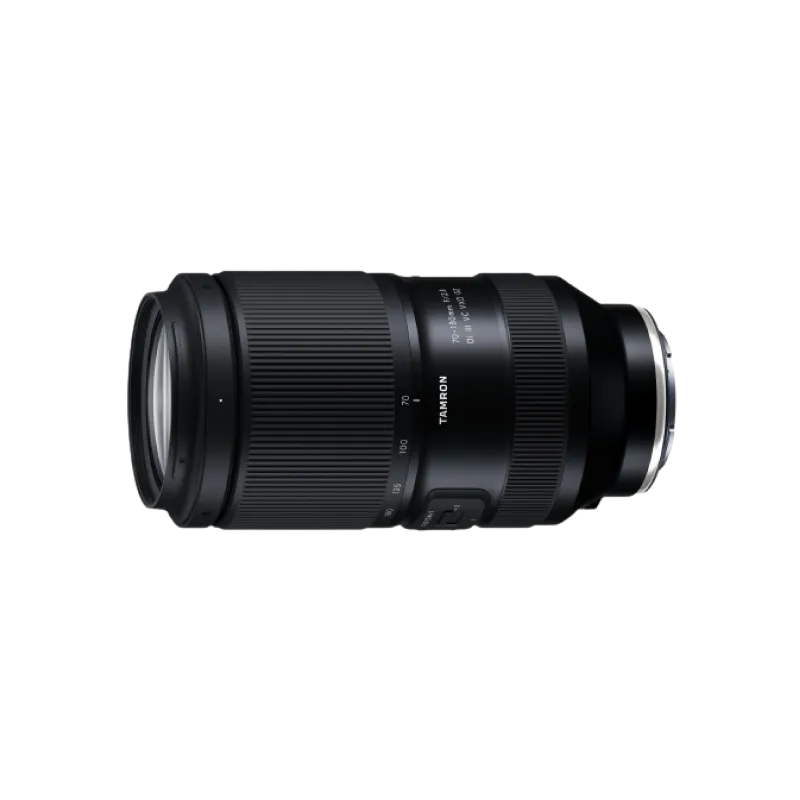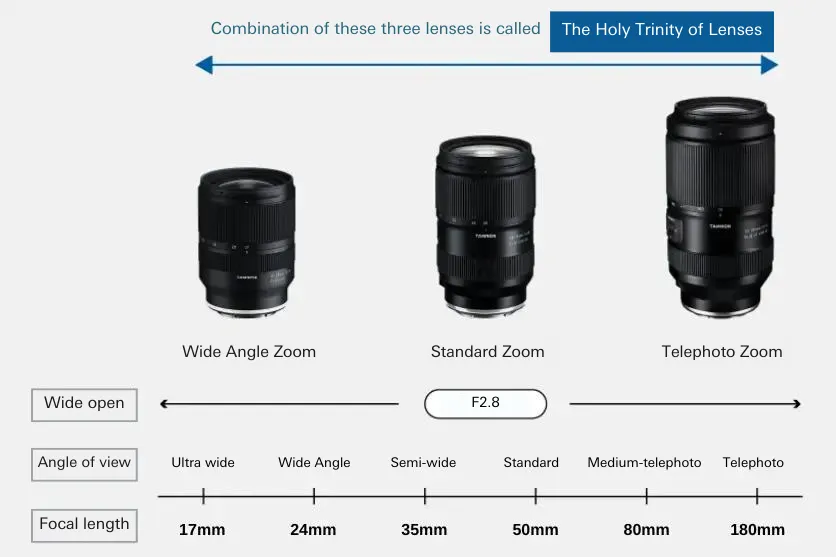September 30, 2024
Is the holy trinity of lenses necessary? Exploring the appeal and advantages of trinity lenses
Is the holy trinity of lenses necessary? Exploring the appeal and advantages of trinity lenses


The term “trinity lens” refers to a fast-aperture zoom lens with a constant maximum aperture of F2.8. These lenses are favored by many photographers. Many people may be interested in trinity lenses but hesitant about making a purchase. There are cases where a regular zoom lens feels enough, and there may be concerns due to ease of carrying due to the weight and size, price, or other factors. On the other hand, there is no denying the appeal and expressive capabilities unique to trinity lenses. That’s why in this article we will describe the characteristics of these trinity lenses and give you some information to help with choose the right lenses.
The “holy trinity of lenses” or simply “trinity lenses” is a general name given to three fast aperture zoom lenses with a constant maximum aperture of F2.8, namely a wide-angle zoom, standard zoom and telephoto zoom. As trinity lenses have a large aperture, they characteristically produce the large bokeh typical of interchangeable lens cameras. Moreover, since they take in a large amount of light, they allow you to bring in enough light even at higher shutter speeds.
As prime lenses generally have fast apertures indicated by their low f-stop values such as F1.4 or F2 and allow you to take images with high image quality and beautiful bokeh, many photos use primes as their main lenses. That is why there are some people who own prime lenses, favor the image quality and expressions of bokeh they produce, and do not feel the need to go to the effort of purchasing trinity lenses.
However, since prime lenses review you to move yourself in relation to a subject in order to adjust the angle of view, for subjects where it is physically difficult to adjust the distance or scenarios that limit movements to different shooting locations, it can be difficult to deal with a prime lens. That is why there are many situations were a zoom lens comes in handy.
As trinity lenses have fast apertures combined with complex optical designs, the lenses tend to be larger and heavier than regular zoom lenses. That is why there are cases where people feel that ease of carrying and handling are drawbacks.
However, among trinity lenses there are models that maintaining their performance characteristics while striking an excellent balance with their light weight and compact size. TAMRON, for example, has a lineup of lenses that bear these characteristics, and we encourage you to check them out.
There are cases where you want to purchase a trinity lens but the price is higher than your budget allows and you find it difficult to get your hands on one. As many trinity lens models use special materials for their glass elements and coatings, and generously incorporate optical technologies, the prices tend to be on the higher side.
Considering the budget, there is also the option of “F4 trinity lenses.” As the name suggests, these are zoom lenses with a constant maximum aperture of F4, and like the holy trinity of lenses, refers to three zoom lenses, namely a wide-angle, standard and telephoto zoom. Despite having a darker f-stop than trinity lenses, these lenses tend to be more compact, lightweight and inexpensive than their trinity counterparts.
Generally speaking, most trinity lenses are marketed for their pursuit of good optical performance, and the ability to take photos with high image quality is one of their biggest characteristics. Additionally, due to their fast apertures (small f-stop values), the camera can gather a greater amount of light, allowing subjects to be photographed without issue in indoor environments with insufficient brightness, and when there is not enough sunlight such as cloudy weather or dusk. Another advantage is the ability to increase the shutter speed even in dark locations, which allows you to take images with high image quality while minimizing camera shake.
Trinity lenses elaborately combine multiple special lens elements and also use cutting-edge lens coatings. As a result, they are able to produce high clarity images that boast stunning bokeh and suppress aberrations and flare. This allows you to achieve glamourous bokeh effects that are smooth and bear the hallmarks of interchangeable lenses cameras, something that could be described as “bokeh that just melts away.”
To utilize the beautiful bokeh that is characteristic to a trinity lens, we recommend portrait photography. By setting an f-stop value that is close to the wide-open aperture, you can take impressive portraits that will bring out the charm of your subject. Additionally, since trinity lenses have a bright constant maximum aperture of F2.8, you can take high image quality shots even when shooting against backgrounds with low light such as shade or night scenes.
With a trinity lens it is easier to take bright images even in locations with minimal light, such as indoor recitals, weddings, and concerts. Moreover, at events such as weddings where you need photos taken from various angles of view, a benefit of trinity lenses is that you can shoot with a fixed exposure even when swapping lenses. This allows you to capture definitive scenes without missing shooting opportunities.
When shooting sports, you need to click the shutter in time with the fast movements of subjects. In general, images tend to be darker when faster shutter speeds are used. However, with a trinity lens it is easier to ensure a sufficient amount of light when shooting things like indoor sports under low-light conditions, even at low ISO sensitivity and faster shutter speeds. This allows you to take clear and beautiful images with minimal subject blurring or camera shake.
As with sports, to photograph moving animals you need a fast shutter speed, and with a trinity lens you will be able to ensure high image quality with sufficient brightness. The ability to ensure proper exposure event when there is minimal sunlight such as during cloudy weather or at dusk is particularly appealing. In addition, many trinity lenses feature excellent moisture-resistant constructions, making them ideal for shooting outdoors.
Trinity lenses are also great for taking sharp and clear landscape shots. As it is possible to take in a sufficient amount of light even with the aperture stopped down, you can take landscape photos with clear and crisp rendering down to the fine details. And similar to when photographing wildlife, as you can take bright photos even under adverse conditions such as cloudy weather, you will be able to produce high quality images even in severe environments with unpredictable weather.
Many of those thinking about a trinity lens are focused on image quality. But when choosing a trinity lens, there are key points other than image quality you should also take into account, such as portability and ease of operation. In this next section we will share some of the points to consider when purchasing a trinity lens.
First, check the weight and size of the lens. Due to their construction, trinity lenses in general tend to be larger and heavier. But there are models designed to be lighter and more compact. As trinity lenses are often carried around for extended periods during travel, events, climbing mountains and so on, a lens that is as portable as possible is a good choice. A lens with good handling will make it less likely for you to miss definitive moments.

Contrast and gradation expression are key points that reveal the individual qualities of a lens. When a lens can properly render contrast between light and dark in your photos, it will significantly deepen the expressive range available to you.
Additionally, a lens with outstanding gradation expression will be able to portray subtle gradations and light color tones in your subject in delicate and smooth fashion. We encourage you to check shooting impressions for different lenses while confirming MTF curves and other data to pick a lens that mostly closely represents what you envision.
MOD is the shortest distance from a subject to the camera at which the subject can be brought into focus. As a shorter minimum object distance enables close-up photography similar to a macro lens, it broadens the range of your visual expression. This is an important point to check when you want to try to take distinctive images, such as photos that strongly emphasize details.
Trinity lenses are often used under harsh conditions, such as dim environments, fast shutter speeds, and situations that require frequent adjustments to the angle of view. Therefore, an AF mechanism that lets you bring subjects into focus without stress will make it easier to consistently capture images with high image quality without missing shooting opportunities. If a lens also offers strong AF tracking performance, you will be able to reliably track moving subjects, making it easier to deal with subjects that move in unpredictable ways such as children and animals. When shooting in quiet environments such as recitals, or photographing skittish animals, an AF mechanism with excellent quietness is another thing to look out for.
Using a trinity lens, you can take photos utilizing stunning bokeh that are bright and boast high image quality. Another appeal of a trinity lens is their versatility in various shooting scenarios, from portraits to sports photography. While your impression of a trinity lens might be that they are heavy, large and difficult to handle, there are also lightweight and compact models. When purchasing a trinity lens, check the key points introduced in this article and choose the lens that is the best fit for you.

Lens Featured in this Impression
-

-
16-30mm F/2.8 Di III VXD G2 a064(Model )
Expanding upon the success of the highly acclaimed TAMRON 17-28mm F/2.8 Di III RXD (Model A046), the G2, 2nd-generation emerges as an advanced 16-30mm F/2.8 Di III VXD G2 (Model A064). While broadening the zoom range, it maintains a compact, lightweight design and delivers exceptional image quality. In addition, it features improved autofocus performance and has been updated to the latest lens design, enhancing overall operability. It’s also compatible with TAMRON Lens Utility™, allowing you to customize practical functions for both photography and videography. Retaining the mobility and versatility of its predecessor, the 16-30mm F2.8 G2 unlocks new creative possibilities. Experience the unique creative expressions that only a fast, ultra wide-angle lens can offer.
-

-
28-75mm F/2.8 Di III VXD G2 a063(Model )
Product Page | 28-75mm F/2.8 Di III VXD G2 (Model A063) is the second-generation fast-aperture standard zoom lens for Sony and Nikon full-frame mirrorless cameras, offering significantly improved optical and autofocus performance and new function customization.
-

-
70-180mm F/2.8 Di III VC VXD G2 a065(Model )
70-180mm F/2.8 Di III VC VXD G2 (Model A065) has evolved to G2 level.This is the world’s smallest and lightest, fast-aperture telephoto zoom lens for Sony E-mount and Nikon Z mount with astounding portability and superb image quality.












